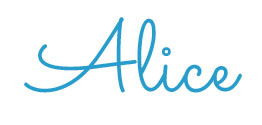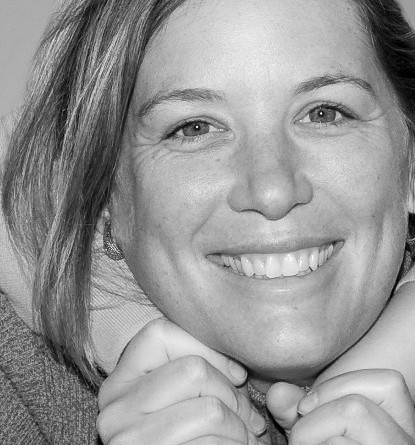Are My Labia Too Long?
By Julie Warren
Giving women opportunities to talk about their deepest insecurities, about their bodies or their sexuality, whether it is at a “book” club or during one-on-one chats with their besties, can be incredibly liberating. Recently, I was given such an opportunity with a group of women: one close friend and three strangers. Surprisingly one of their husband’s, who unlike most men, did not run for the nearest TV broadcasting football at the mere utterance of the word “labia,” made cameo appearances throughout the night, peppering our conversation with the male perspective.
I told my husband the next day it had ended up being the most girly-girl talk I had ever had … in my life! “That’s saying something,” he said, knowing my penchant for girly-girl topics. It reminded me of the time I held a women’s focus group at my house. I had invited a diverse group of women (a housewife, a doctor, a Brazilian waxing specialist, a lesbian … you get the idea) to inform an article I was writing about how men could increase their chances of getting a blowjob. Women were invited with the explicit requirement to talk about sex. (Conversation was facilitated with wines with such names as “Gnarly Head” and “Purple Cowboy”).
Sometimes conversations may organically weave themselves towards sexual content (this happens frequently enough to make me believe that people are desperate to talk about sex), but often it remains constrained, as each party determines where the acceptable boundary within the conversation lies. Worries about offending or the risk of embarrassment puts a damper on the potential for a free and uninhibited discussion. Imagine if there were no such boundaries and that anything was an acceptable topic.
Released from inhibitions, participants in these groups began to talk and to share.
Into the wee hours of the morning we talked. We opened up about our fears, our insecurities, and our experiences. We sought advice and validation from each other.
I spent a large part of that evening reassuring a woman that her labia were not too long, and in fact, looked just fine. (Not sure where I gained the expertise to speak so wisely on the ways of labia … but I digress.)
She had spent a large part of her adult life feeling embarrassed by her anatomy, ironically when she had had no other adult labia to compare hers to. I wondered where she had started to develop this notion that things weren’t quite right downstairs? By the end of the evening, we were comparing the size of our labia in a full-length mirror to reassure ourselves that our anatomy was normal.
Without opportunities to share our intimate fears, a whole lifetime of insecurity and questions can develop. Unlike men whose bodies are more easily observed, women are often left with their own anatomy and perhaps glimpses of porn to judge whether what they have is “normal.” How is it supposed to look? How much pubic hair should we have? How big should my nipples be? Does everyone have hair there? It is a rare crowd of women who can share what they’ve got and compare notes.
“A woman … too often … appraises herself in the mirror, one piece at a time. Whatever she sees depends on more factors than anyone could ever contemplate, many of them buried in childhood and adolescence, then reinforced through life experiences, social hierarchies, and our culture. In every piece, she sees what she wants to be, what she could be, what she used to be, and very rarely, happily accepts what she is.” (from Finding the Doorbell: Sexual Satisfaction for the Long Haul, Pierce and Morgan.)
Left to our own devices we will often invent a “normal” or imaginary ideal for our bodies. This ultimately creates an unattainable benchmark towards which we hopelessly strive. This endless journey often results in our never fully accepting the beautiful anatomy we are born with. Critical and ashamed, we find pieces of ourselves to tear apart or conceal lest others discover we don’t measure up. We augment and modify. We hide behind shapewear and disguise. We even remove every last offending body hair in order to fit into a made-up cultural ideal of beauty (which apparently is hairless).
What I took from these evenings was that apart from surveying a gynecologist to determine what the normal female genitalia looks like and what styles of pubic hair most women are sporting these days (from our friend the waxing expert), we really don’t have anywhere to go to figure out how we measure up. I wonder though, what are we trying to measure up to and if in fact measuring up to it really matters?
I could wrap up this article by repeating the lecture so often given to women to “love their bodies.” If we’re honest with each other, despite the frequent repetition of these words, we haven’t let them sink in and we continue to be our own harshest critics. Instead, let’s try something different.
Entering this New Year, I am going to ask women everywhere to invite their friends over and require/permit them to talk about sex. Perhaps as hostess you could throw out, in advance, a facilitating topic, such as “Do you wax or shave?” or “Is au natural pubic hair really back in style?” or “How do you tell your partner what you want in bed?”
Literally, the possibilities are endless. I would suggest, particularly for the novice sex talkers among you, that you provide access to alcohol to facilitate dis-inhibition. Having a mirror handy is also a must for those occasions when someone thinks that her labia are too long, and a group assessment becomes necessary. As women, let’s take back the power to love our bodies by creating safe and supportive spaces to share.
Freelance blogger and writer Julie calls the Rocky Mountains of Colorado home. Published online and in print, Julie’s topics of interest include ontology, or what it is to be human, how to be your best self and pubic hair (not necessarily in that order).

